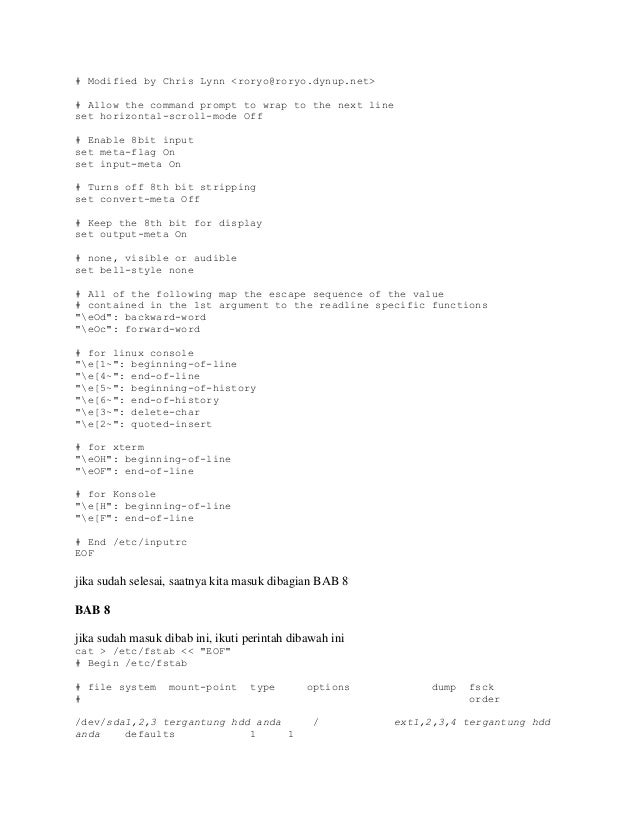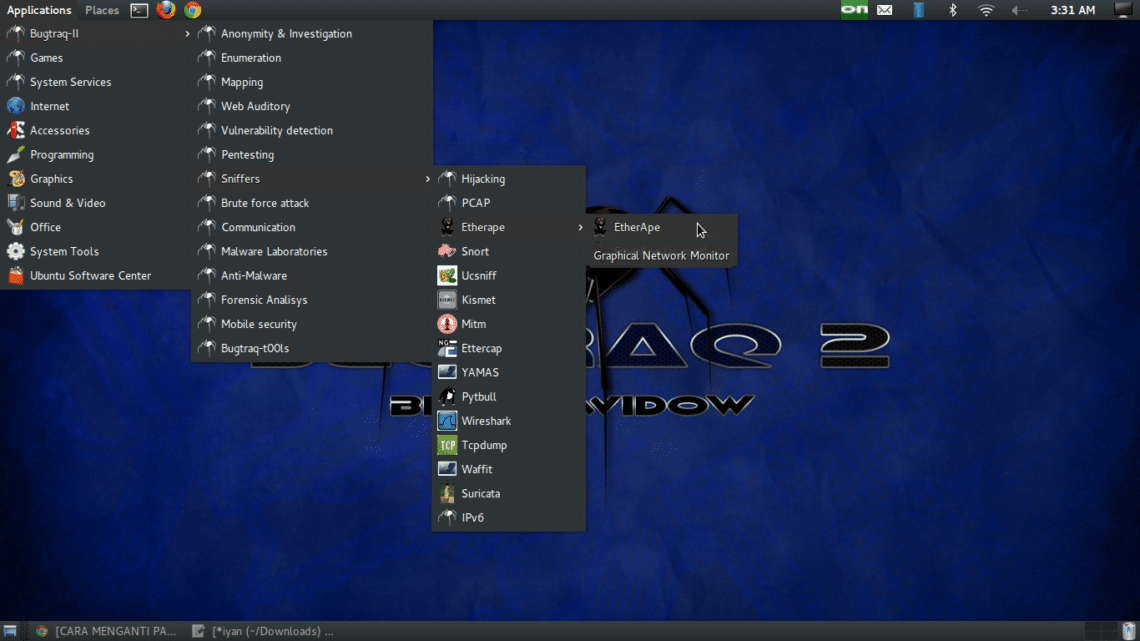LFS (Linux From Scratch) is the most popular tool to create customized Linux distributions from source. Creating your own Linux distribution may include some advantages (and disadvantages too). Among advantages you will learn a lot on Linux by creating your own Linux distribution. You will know how Linux modules interact and how to customize the system.
Dec 02, 2005 1. Prepare a partition on your hard drive for LFS Live CD installation. Or maybe you want to use the whole hard drive. Format and install the file system of your choice. Also prepare a swap partition. I used a swap equal in size to my RAM. Boot the LFS Live CD. Configure your network so that you can connect to the Internet. Here's a good article you can check out from LWN.net. There is a book I used which covers a lot of distros, though it does not cover creating a flash-bootable image. The book is Live Linux(R) CDs: Building and Customizing Bootables. You can use it with supplemental information from your distro of choice.

The operating size is also an advantage depending on your hardware resources or the use you want to give the system. On their website LFS developers say the created a web server to work with Apache on 5 mb size. Together with Gentoo Linux, Linux From Scratch is the most flexible way to setup a Linux system. Building it is pretty simple and the process is described step by step, below I will only show the initial steps to portray an idea of the difficulty and a link to the official documentation showing from the building stage.
To get started with Linux From Scratch you need to create first a partition (minimum 3 GB due compilation process), it is also recommendable to create a swap partition or to share your existing one (for instructions on partitioning check Partitioning hard disks under Debian/Ubuntu and resizing partitions).
- Can anyone point me to a good tutorial on creating a bootable Linux CD from scratch? I need help with a fairly specialized problem: my firm sells an expansion card that requires custom firmware. Currently we use an extremely old live CD image of RH7.2 that we update with current firmware.
- Sep 22, 2015 In this video I am showing you How to make bootable usb drive and Bootable CD/DVD drive (linux live CD) for linux operating system. 'Linux live CD' word is quite famous for various diagnostic of.
If you need to create a Linux distribution the this tutorial will clarify important issues while giving a fast view on the creation processes. This article focuses on Linux From Scratch and Ubuntu Live as ways to customize a Linux distribution. Nov 04, 2010 Linux is so useful, you don’t even need to install it before it gets to work. One of the popular uses of Linux is to create live media that can be used to run desktop systems or to create utility discs for all kinds of administration. Confused about the live CD that’s right for.
It lets you 'mix' your songs, by playing two or more tracks at the same time, adjust their relative speed so that their tempo will match, apply effects like loops, etc, and crossfade from one side to the other. Ns virtual dj 6. 0 free download for windows 7.
Once you created the partition create the $LFS variable by running:
You can check it by running:
Then mount the partition:
# mount -v -t ext3 /dev/<sdX> $LFS
Note: replace <sdX> for your partition.
Then run for the swap partition:
You’ll need to download packages to a specific directory called LFS/sources, to create the directory run:
Make it writable and sticky:
Download and save within the directory all packages from http://www.linuxfromscratch.org/lfs/view/6.6/chapter03/packages.html
and
You can use the wget-list http://www.linuxfromscratch.org/lfs/view/6.6/wget-list
Create the tools directory and symbolic link by running:
Run the following commands to create the lfs user giving it rights on the tools and sources directories:
# useradd -s /bin/bash -g lfs -m -k /dev/null lfs
# passwd lfs
# chown -v lfs $LFS/tools
# chown -v lfs $LFS/sources
# su - lfs
Log in as the lfs user and run:
Then type:
And run:
Create a new .bashrc by running:
And add:
# umask 022
# LFS=/mnt/lfs
# LC_ALL=POSIX
# LFS_TGT=$(uname -m)-lfs-linux-gnu
# PATH=/tools/bin:/bin:/usr/bin
# export LFS LC_ALL LFS_TGT PATH
# EOF
Then run:
Then you can save the tools to start building your linux distribution following the steps at http://www.linuxfromscratch.org/lfs/view/6.6/chapter05/introduction.html
After finishing change the tools directory ownership by running:
The official documentation to build your distribution, prepare the kernel and base software can be found here. It is a sequence of steps you need to create a customized distribution. The steps are to prepare Virtual Kernel File Systems, Package Management, Entering the Chroot Environment, Creating Directories, Creating Essential Files and Symlinks, installing additional software listed hereStripping Again and Cleaning Up.
To start customizing the system visit the chapters:
- Configuring the network Script
Creating the /etc/fstab File
Finally install GRUB Using GRUB to Set Up the Boot Process and follow the steps before rebooting for first time

Ubuntu Live
Creating a customized Linux based on Ubuntu is pretty easy, it can be done very fast, it is extremely simple when compared with Linux From Scratch but it is not flexible at all, you’ll be able to add software, customize background and some details but basic customizations like the applications menu edition are not supported.
And add:
--variant=minbase
bionic
$HOME/live-ubuntu-from-scratch/chroot
Set mount points:
Users can choose drum sounds from a collection of classic and modern electronic drum kits in a variety of genres. The Beat Sequencer is inspired by the simple yet powerful workflow of classic drum machines, and users can quickly build and edit grooves using a step sequencer interface that provides individual control over multiple drum and percussion tracks. Garageband for macbook.
# sudo mount --bind /run $HOME/live-ubuntu-from-scratch/chroot/run
# sudo chroot $HOME/live-ubuntu-from-scratch/chroot
# mount none -t proc /proc
# mount none -t sysfs /sys
# mount none -t devpts /dev/pts
# export HOME=/root
# export LC_ALL=C
# echo 'ubuntu-fs-live' > /etc/hostname
Then you’ll need to update the repositories and run apt update and the following command:
# dbus-uuidgen > /etc/machine-id
# ln -fs /etc/machine-id /var/lib/dbus/machine-id
# dpkg-divert --local --rename --add /sbin/initctl
# ln -s /bin/true /sbin/initctl
# apt-get install -y ubuntu-standard casper lupin-casper discover laptop-detect os-prober network-manager resolvconf net-tools wireless-tools wpagui locales linux-generic
When prompting configuration screens like GRUB’s press ENTER to default choices to continue. Then run:
Install any X window manager you want:
Add any additional software you want in your distribution and then run:
Select your locales and reconfigure the resolv.conf and network manager:
# dpkg-reconfigure resolv.conf
# dpkg-reconfigure network-manager
Then run:
# rm /sbin/initctl
# apt-get clean
# rm -rf /tmp/* ~/.bash_history
Unmount all filesystems:
# umount /sys
# umount /dev/pts
# export HISTSIZE=0exit
# sudo umount $HOME/live-ubuntu-from-scratch/chroot/dev
# sudo umount $HOME/live-ubuntu-from-scratch/chroot/run
Create directories and copy the kernel and binaries:
# mkdir -p image/{casper,isolinux,install}
# sudo cp chroot/boot/vmlinuz-**-**-generic image/casper/vmlinuz
# sudo cp chroot/boot/initrd.img-**-**-generic image/casper/initrd
# sudo cp chroot/boot/memtest86+.bin image/install/memtest86+
# wget --progress=dot https://www.memtest86.com/downloads/memtest86-usb.zip -O image/install/memtest86-usb.zipunzip -p image/install/memtest86-usb.zip memtest86-usb.img > image/install/memtest86rm image/install/memtest86-usb.zip
Setup GRUB
Linux From Scratch Download
Run all following commands:
Linux From Scratch Book
# sudo mksquashfs chroot image/casper/filesystem.squashfs
# printf $(sudo du -sx --block-size=1 chroot cut -f1) > image/casper/filesystem.size
# cd $HOME/live-ubuntu-from-scratch
# cd $HOME/live-ubuntu-from-scratch/image
# grub-mkstandalone --format=x86_64-efi --output=isolinux/bootx64.efi --locales=' --fonts=' 'boot/grub/grub.cfg=isolinux/grub.cfg'
# grub-mkstandalone --format=i386-pc --output=isolinux/core.img --install-modules='linux16 linux normal iso9660 biosdisk memdisk search tar ls' --modules='linux16 linux normal iso9660 biosdisk search' --locales=' --fonts=' 'boot/grub/grub.cfg=isolinux/grub.cfg'
# cat /usr/lib/grub/i386-pc/cdboot.img isolinux/core.img > isolinux/bios.img
# sudo /bin/bash -c '(find . -type f -print0 xargs -0 md5sum grep -v './md5sum.txt' > md5sum.txt)'
# sudo xorriso -as mkisofs -iso-level 3 -full-iso9660-filenames -volid '<YourDistroName>' -eltorito-boot boot/grub/bios.img -no-emul-boot -boot-load-size 4 -boot-info-table --eltorito-catalog boot/grub/boot.cat
--grub2-boot-info --grub2-mbr /usr/lib/grub/i386-pc/boot_hybrid.img -eltorito-alt-boot -e EFI/efiboot.img -no-emul-boot -append_partition 2 0xef isolinux/efiboot.img -output './<yourdistronam>.iso' -graft-points '.' /boot/grub/bios.img=isolinux/bios.img /EFI/efiboot.img=isolinux/efiboot.img
Scratch Live For Sale
As you can see the process with Ubuntu Live is a lot faster and easier, but it is not more than an Ubuntu distribution with light customizations in contrast to Linux From Scratch which is fully customizable. I hope you found this tutorial useful, keep following LinuxHint for additional tips and updates on Linux and networking.